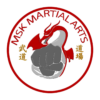Unlock Your Potential: 3 Essential Stretching Techniques for Enhanced Martial Arts Performance
Martial arts isn’t just about strength and technique; flexibility plays a pivotal role in achieving mastery. Incorporating effective stretching techniques into your routine not only prevents injuries but also enhances your overall skillset. Here are three essential stretching practices to elevate your martial arts performance:
1. Dynamic Stretching:
Dynamic stretching involves controlled, deliberate movements that mimic the actions of the activity you’re about to perform. This form of stretching warms up your muscles and increases your range of motion. For martial artists, dynamic stretches can include leg swings, arm circles, and torso twists. Dynamic stretching not only improves flexibility but also boosts blood flow to the muscles, preparing your body for the dynamic movements of martial arts training.
2. PNF Stretching (Proprioceptive Neuromuscular Facilitation):
PNF stretching is a highly effective technique that involves both stretching and contracting targeted muscle groups. It’s a more advanced form of flexibility training and often requires a partner. The process typically includes stretching a muscle group, contracting it isometrically against resistance, and then relaxing into a deeper stretch. PNF stretching can significantly improve flexibility and is particularly beneficial for martial artists aiming for high kicks, fluid movements, and quick changes in direction.
3. Yoga for Martial Artists:
Yoga is a holistic practice that combines physical postures, breath control, and meditation. Incorporating yoga into your routine can enhance flexibility, balance, and mental focus – all crucial elements for martial arts. Poses like Downward Dog, Warrior Poses, and the Seated Forward Bend target areas commonly used in martial arts movements. Additionally, yoga enhances body awareness, helping martial artists become more attuned to their movements and positioning during training.
Tips for Effective Stretching:
– Consistency is Key: Stretch regularly to see improvements in flexibility over time.
– Warm-Up First: Always warm up your body with light aerobic activity before engaging in deep stretches.
– Listen to Your Body: Stretching should never be painful. Focus on a gentle stretch and avoid pushing your body beyond its limits.
– Combine Stretching with Strength Training: Balance flexibility with strength to achieve a well-rounded skillset.
Incorporating these stretching techniques into your martial arts routine can lead to increased flexibility, improved performance, and a reduced risk of injuries. Remember, flexibility is not just about touching your toes; it’s about unlocking your full potential as a martial artist. Embrace these practices, and watch your skills soar to new heights.
